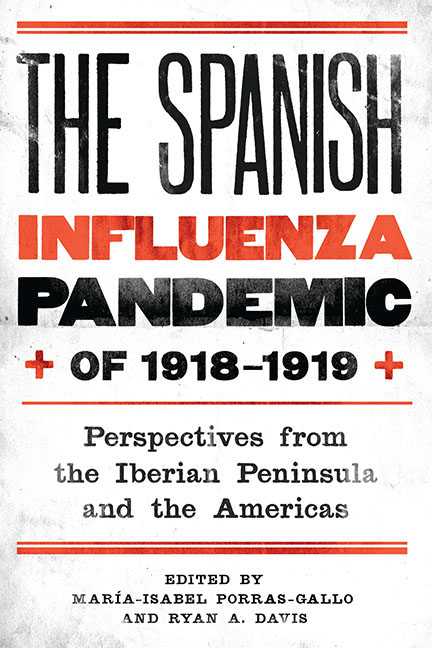 The Spanish Influenza Pandemic of 1918–1919
The Spanish Influenza Pandemic of 1918–1919 Book contents
- Frontmatter
- Dedication
- Contents
- Introduction: Emerging Perspectives of the Spanish Influenza Pandemic of 1918–19
- Part One Scientific Discourse: Now and Then
- Part Two Social Responses: Human and Institutional Actors
- Part Three Interpreting the Epidemic: Sociocultural Dynamics and Perspectives
- Selected Bibliography
- List of Contributors
- Index
Introduction: Emerging Perspectives of the Spanish Influenza Pandemic of 1918–19
Published online by Cambridge University Press: 14 March 2018
- Frontmatter
- Dedication
- Contents
- Introduction: Emerging Perspectives of the Spanish Influenza Pandemic of 1918–19
- Part One Scientific Discourse: Now and Then
- Part Two Social Responses: Human and Institutional Actors
- Part Three Interpreting the Epidemic: Sociocultural Dynamics and Perspectives
- Selected Bibliography
- List of Contributors
- Index
Summary
Over the past decade the Spanish influenza pandemic of 1918–19 has commanded an increasing amount of attention from professionals and laypersons alike. In 1997 pathologist Jeffery Taubenberger and his team published the first partial genetic sequencing of the virus's RNA, bringing science one step closer to unlocking the mysteries of a disease that in 1918 dealt the first major blow to what Eugenia Tognotti has called the “scientific triumphalism” of the germ theory of disease. The year 1918 was an era marked by the recent and astounding discoveries of the causative agents of diseases like cholera (1884), anthrax (1877), and tuberculosis (1882), and it was widely believed that laboratory trials would finally result in the isolation of the pathogenic agent of influenza. Moreover, a likely candidate already existed. On the heels of the nineteenth century's last large-scale flu epidemic in 1892, Richard Pfeiffer proposed that influenza was caused by Haemophilus influenzae, the bacillus later named after him. But his hypothesis was not universally accepted, and during the 1918–19 pandemic, the definitive case for Pfeiffer's bacillus failed to materialize, as laboratory studies produced no conclusive evidence that it was the microorganism responsible for causing the flu. Not until 1933 were Patrick Laidlaw and his team able successfully to isolate a flu virus from humans.
Despite the importance of Laidlaw's discovery, it was merely the first step in addressing the many peculiarities of the Spanish flu. Although the pathogen responsible for causing influenza had been identified, numerous questions about the 1918 virus remained unanswered: why did it yield a W-shaped mortality curve, why was it extremely virulent, what was its etiology? By revealing the genetic code of the virus, Taubenberger and his colleagues’ research held out the legitimate hope that these questions finally could be answered. The urgency to obtain answers and, more concretely, remedies (most notably in the form of a vaccine) escalated when it was discovered that the Spanish flu originated from an avian source and that it was basically the genetic “mother of all [influenza] pandemics.”
- Type
- Chapter
- Information
- The Spanish Influenza Pandemic of 1918–1919Perspectives from the Iberian Peninsula and the Americas, pp. 1 - 18Publisher: Boydell & BrewerPrint publication year: 2014
